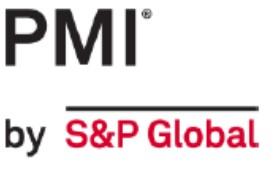The Global Purchasing Managers Index (PMI) for manufacturing, produced by S&P Global and sponsored by J P Morgan edged up again in March and the reading of 50.6 is the highest since July 2022. The manufacturing PMI is a weighted composite index of new orders (30%), output (25%), employment (20%), suppliers’ delivery times (15%) and stocks of purchases (10%). The improvement in the latest report came mainly from an acceleration in output, driven in turn by a strengthening of new orders. Output grew in all three subsectors – consumer, intermediate and investment goods – and in 16 of the 32 countries covered by S&P Global.
One of these was the UK where output overall grew for the first time since February 2023, although the report notes that this was only in the consumer goods sector where the increase outweighed further contractions in the intermediate and investment goods sectors. More importantly, with total new orders also growing, the overall UK PMI for manufacturing for March was 50.3 – this is the first time it has been in positive territory since July 2022 and saw the largest increase in the PMI figure (up by 2.8 points) in this report.
On the downside, manufacturing employment fell again, albeit at its slowest pace since May 2023, and “stocks of purchases” was also down compared to the previous month. We must also note that for the UK, extended suppliers’ delivery times as a result of shipping delays (either directly or downstream in company’s operations) are still giving a perverse boost to the index.
The Euro-zone continues to be the main area of weakness and the overall manufacturing PMI fell back to 46.1, its lowest reading since December 2023. The output element edged up to an 11-month high but this only indicates a slower pace of decline and new orders also fell more slowly. The index was driven down by suppliers’ delivery times reducing significantly following the shipping delays (the opposite to the impact reported for the UK) and by a reduction in stocks of inputs/purchases.
Compared to February, there was a sharp increase in the PMI in Italy (which took it back above the 50 threshold for the first time since March 2023), Greece and, to a lesser extent for the Netherlands while the other 5 Euro-zone economies saw a lower reading (although Spain only saw a very marginal reduction). The largest reduction (compared to February) across the March results globally was in Ireland (down by 2.8 points) where the PMI dipped back into negative territory. It is also worth noting that Germany (41.9) and Austria (42.2) have the lowest overall manufacturing PMIs in March.
In the rest of the European Union (EU), the manufacturing PMI improved compared to February in Czechia, Romania and Sweden, although for the first two of these it was still below the crucial 50 mark (46.2 and 49.3) and exactly on the neutral level for Sweden. There was virtually no change for Hungary or Poland but they are either side of the threshold at 52.3 and 48.0 respectively.
In the other European countries with a PMI survey, Kazakhstan saw an improvement that took them back to a positive position (51.6), Switzerland saw an improvement but, at 45.2, it remains weak, while Turkiye edged down to stand at exactly 50.0.
In the Americas, Brazil, Columbia and the USA all saw a small reduction in their manufacturing PMI compared to the February level although all three were still in positive territory at 53.6, 50.6 and 51.9 respectively. The readings for Canada (49.8) and Mexico (52.2) were virtually unchanged from the previous month.
Finally, in Asia, the manufacturing PMI improved for the ASEAN group of countries (51.5), India (59.1 – the strongest reading in this report), Japan (48.2) and Taiwan (49.3) but only edged up in China (51.1); Australia (47.3) and South Korea (49.8) had lower PMI readings than in February with the latter dipping into negative territory for the first time since last December.
Overall, of the 28 countries and 2 regions that we report on each month, 12 were above the 50 threshold that marks the division between contraction and expansion of activity in the manufacturing sector, with 2 more exactly on this mark.
The individual S&P Global PMI reports are available to download on their web-site at https://www.pmi.spglobal.com/Public/Release/PressReleases but we also have a summary charts report which is available to download below. You should note that the PMI readings for Hungary, Sweden and Switzerland are not compiled by S&P Global but can be found with an appropriate internet search (it also means that they are not part of the global PMI calculation).

